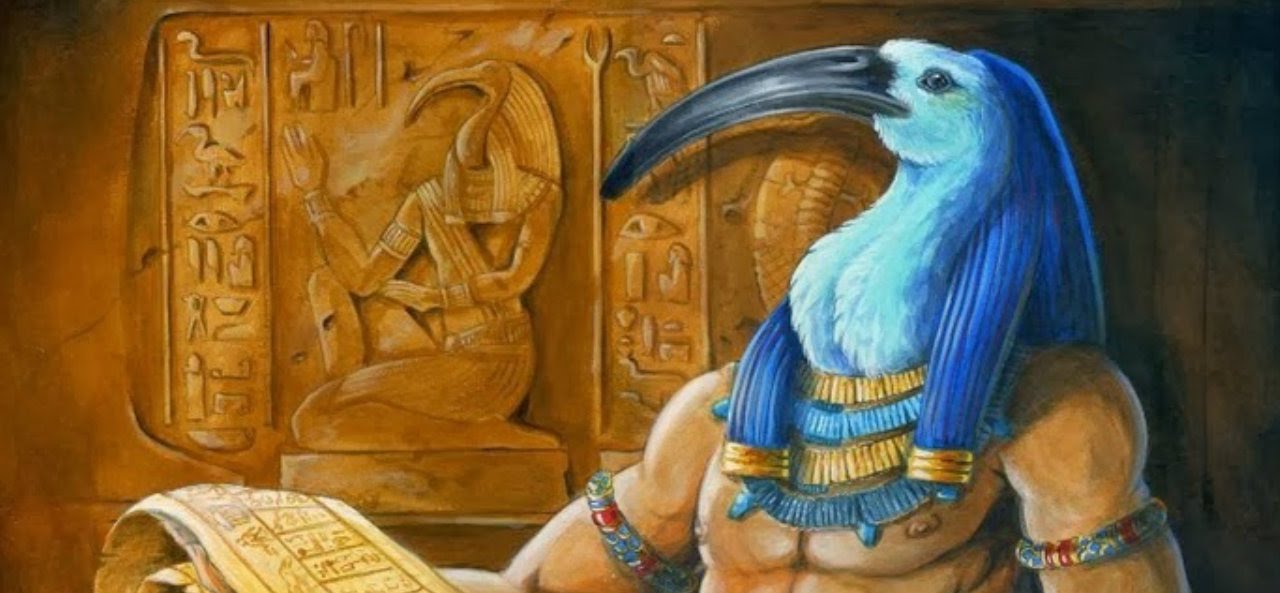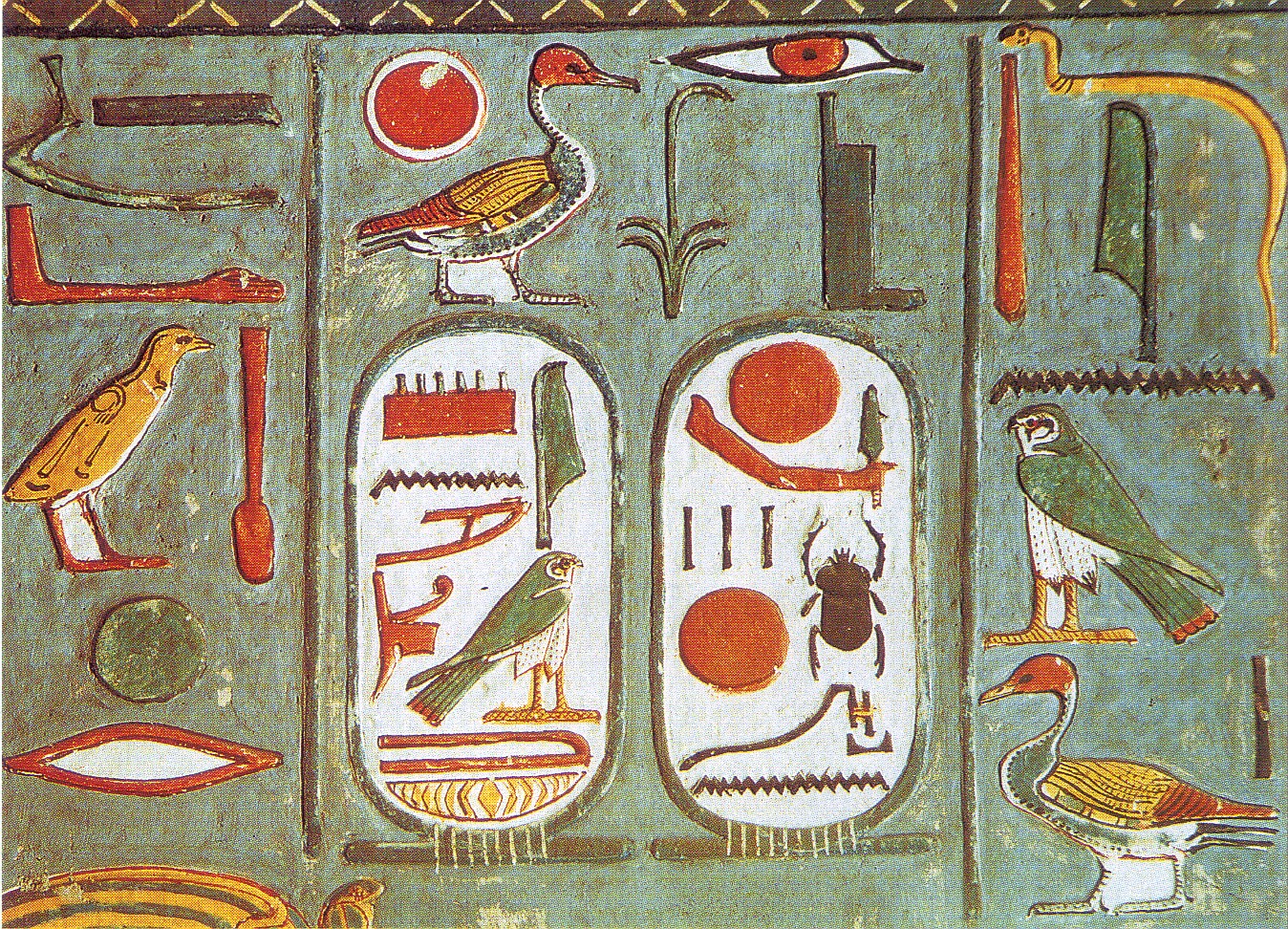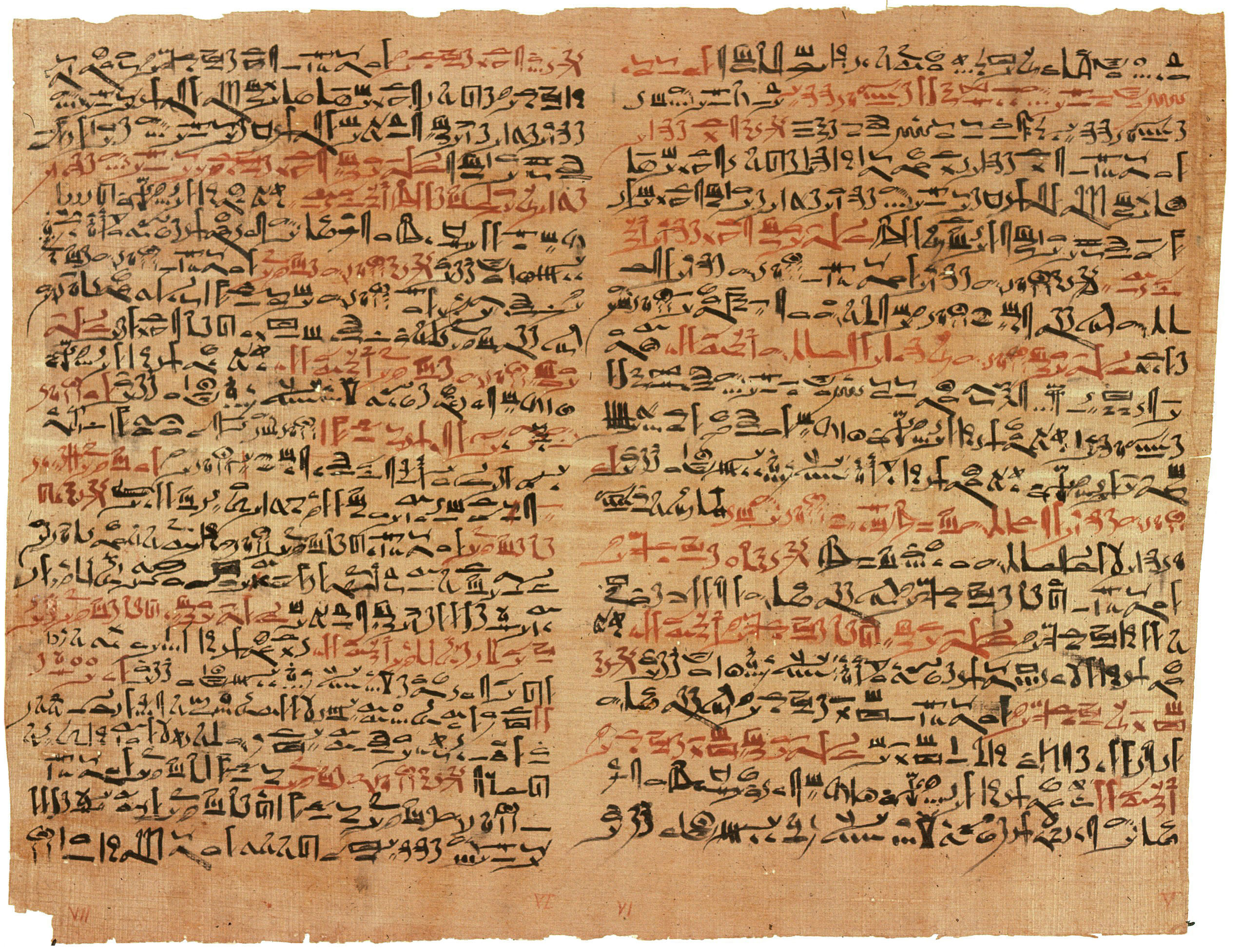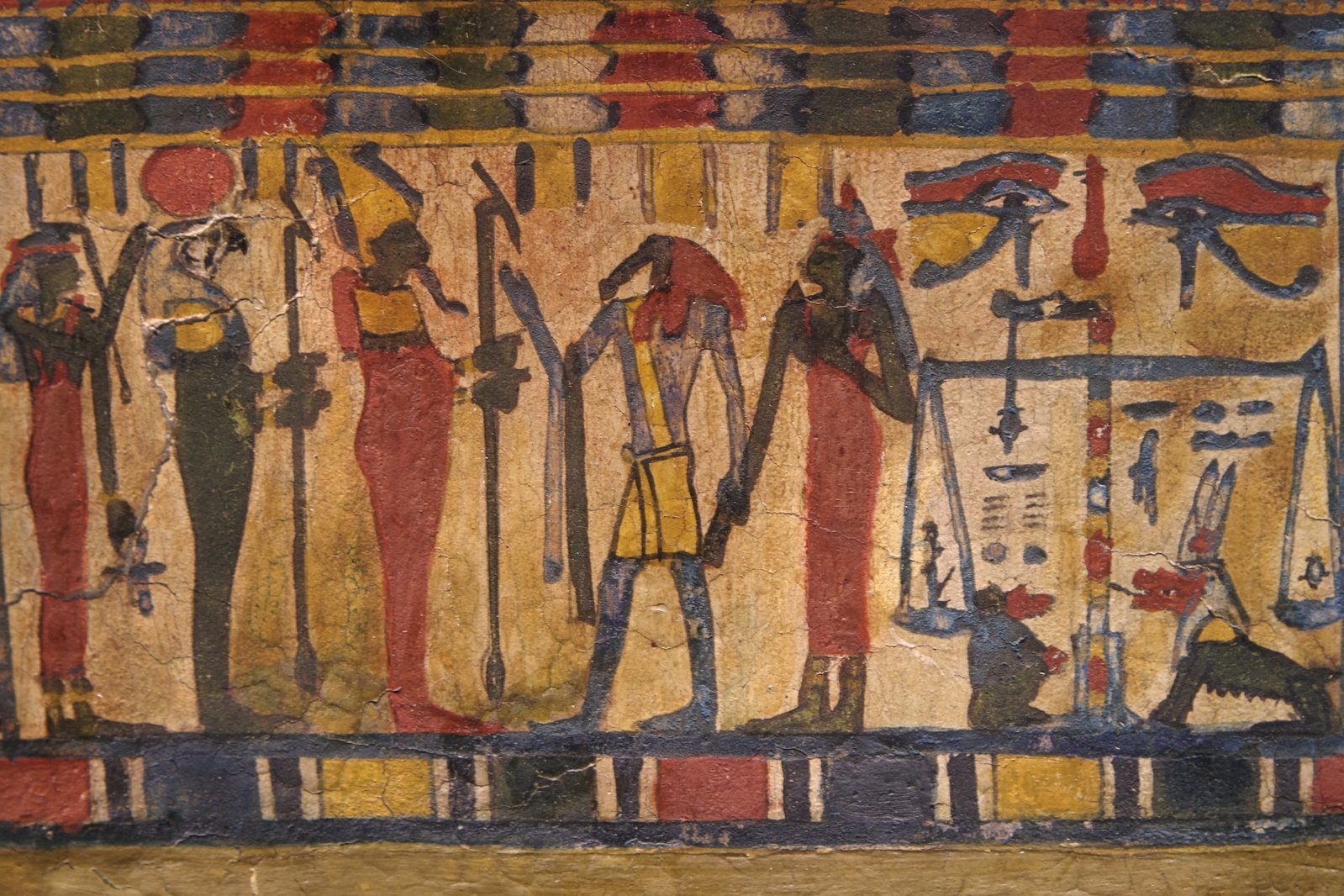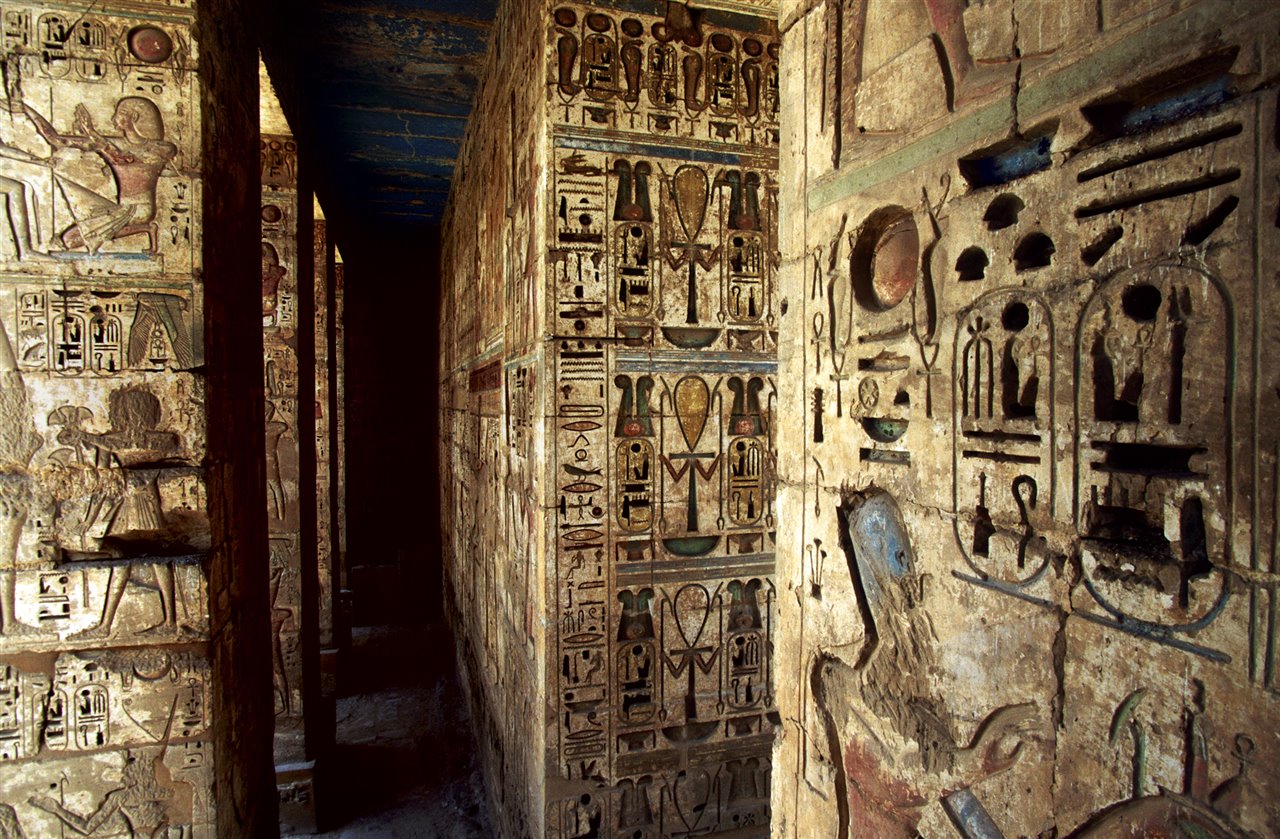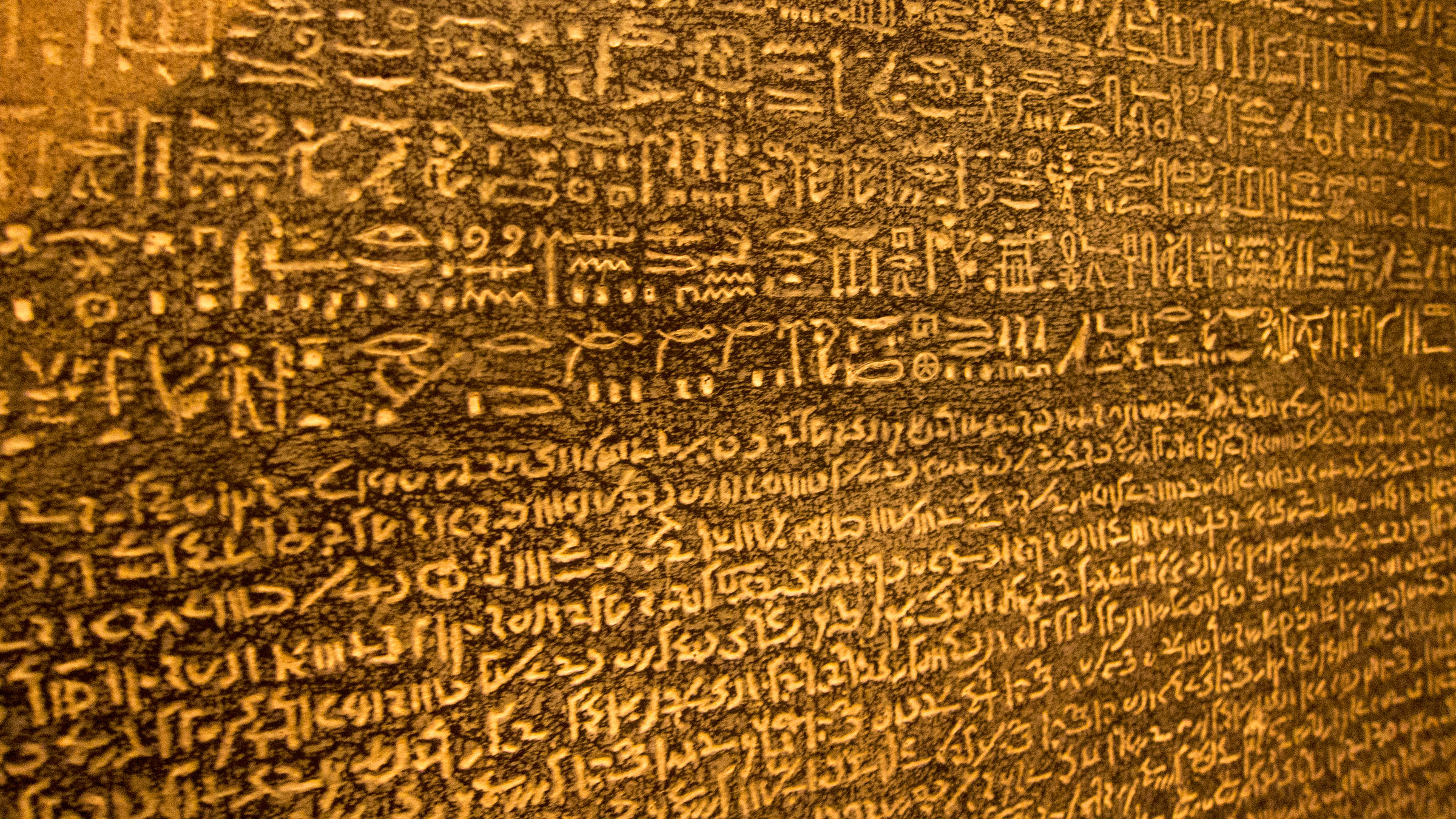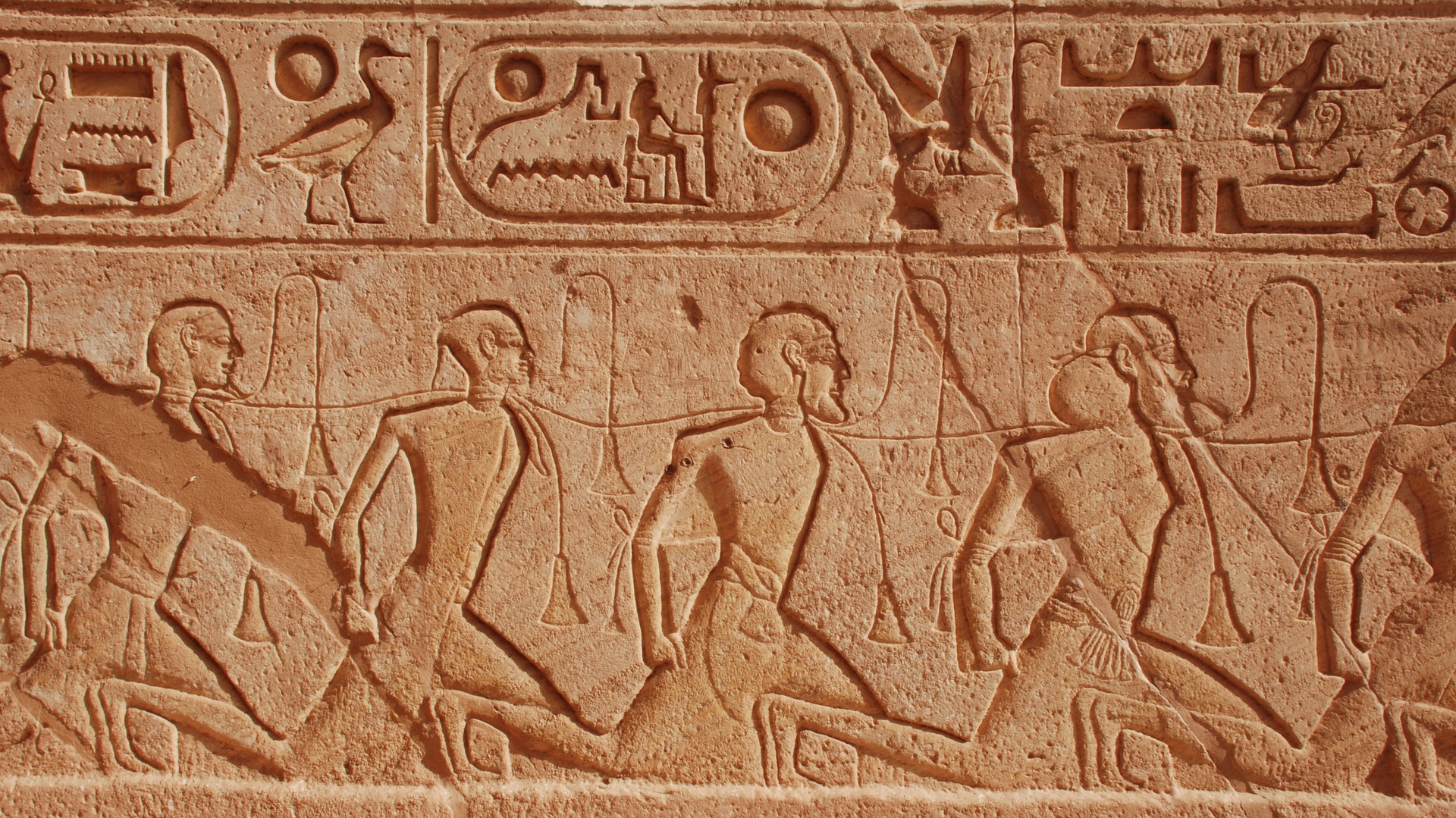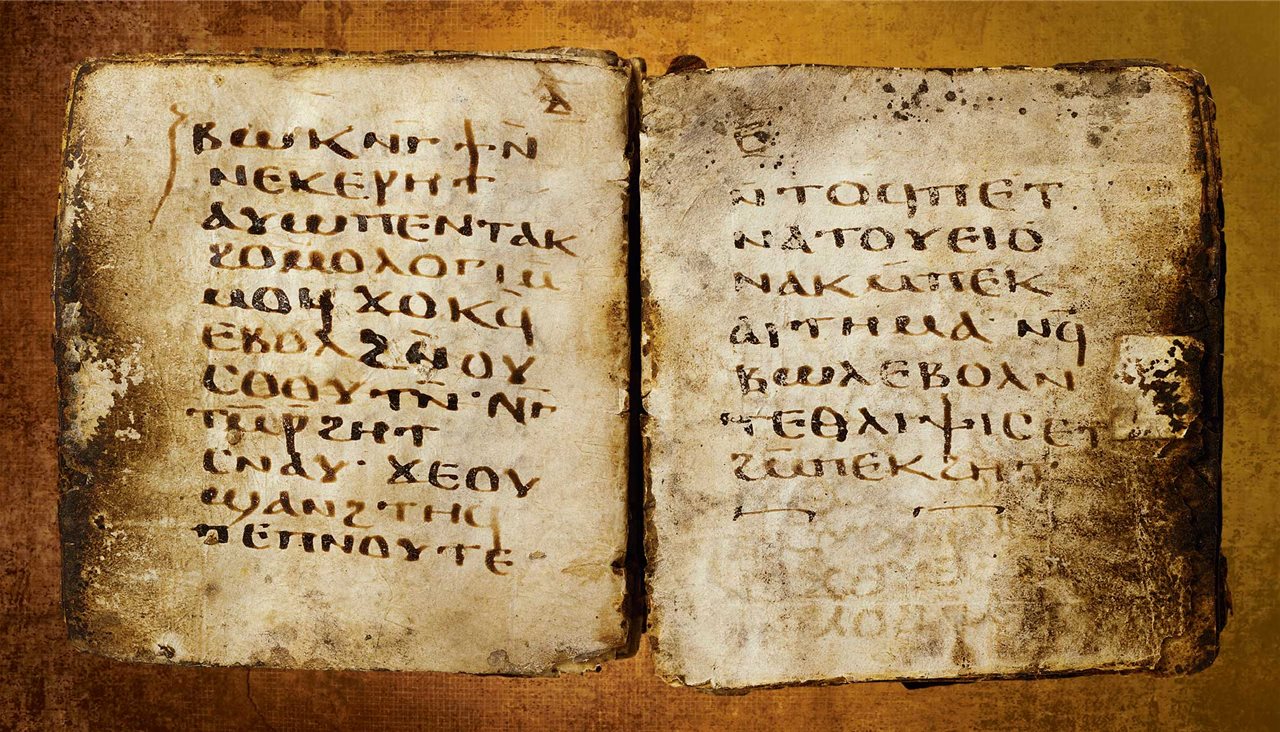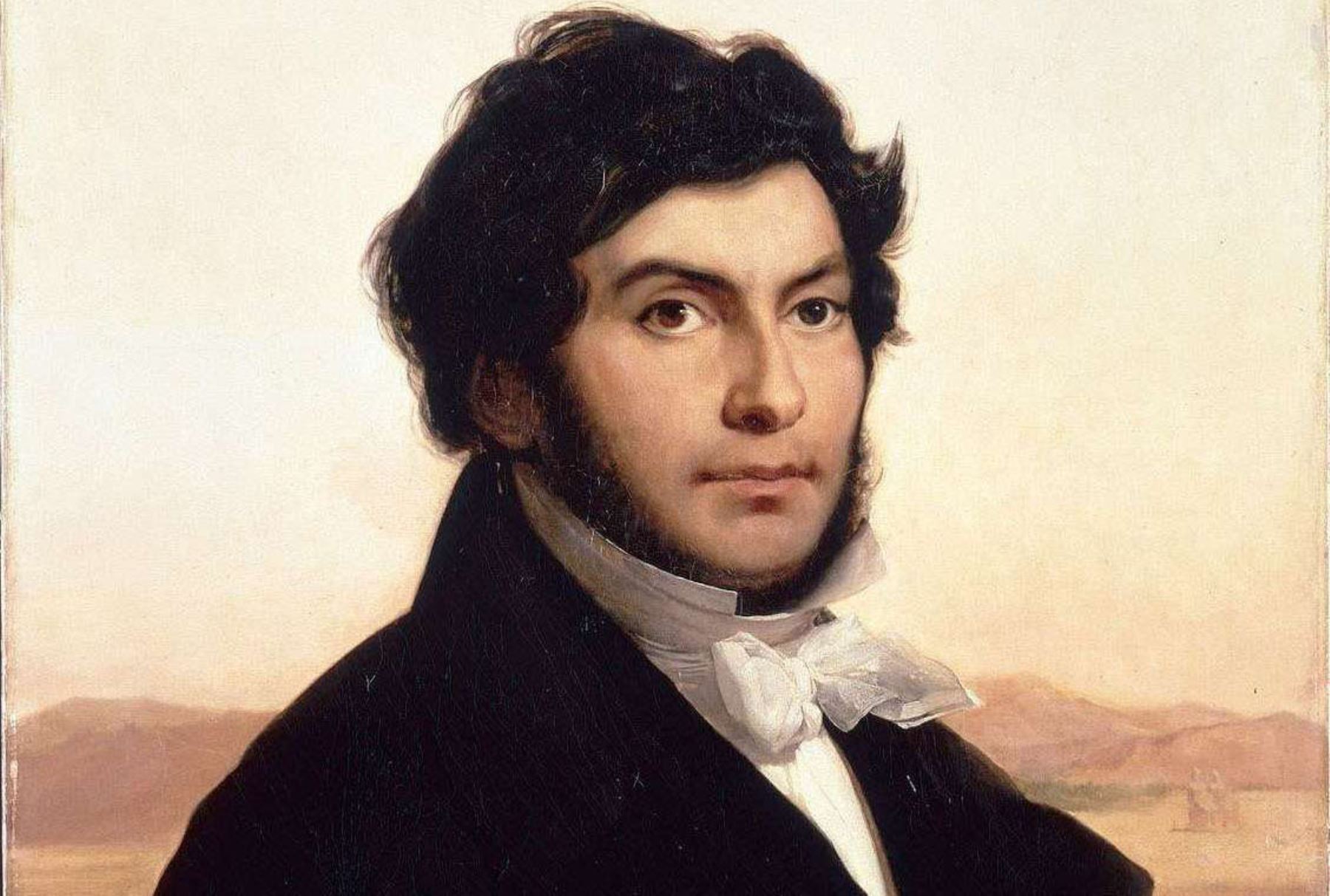One of the ancient cultures that generates the most interest is still Ancient Egypt, full of mysteries, traditions and knowledge, they contributed to the world not only monumental architecture and papyrus, they were also among the first to create a writing system. Get to know everything related to the fabulous egyptian writing!
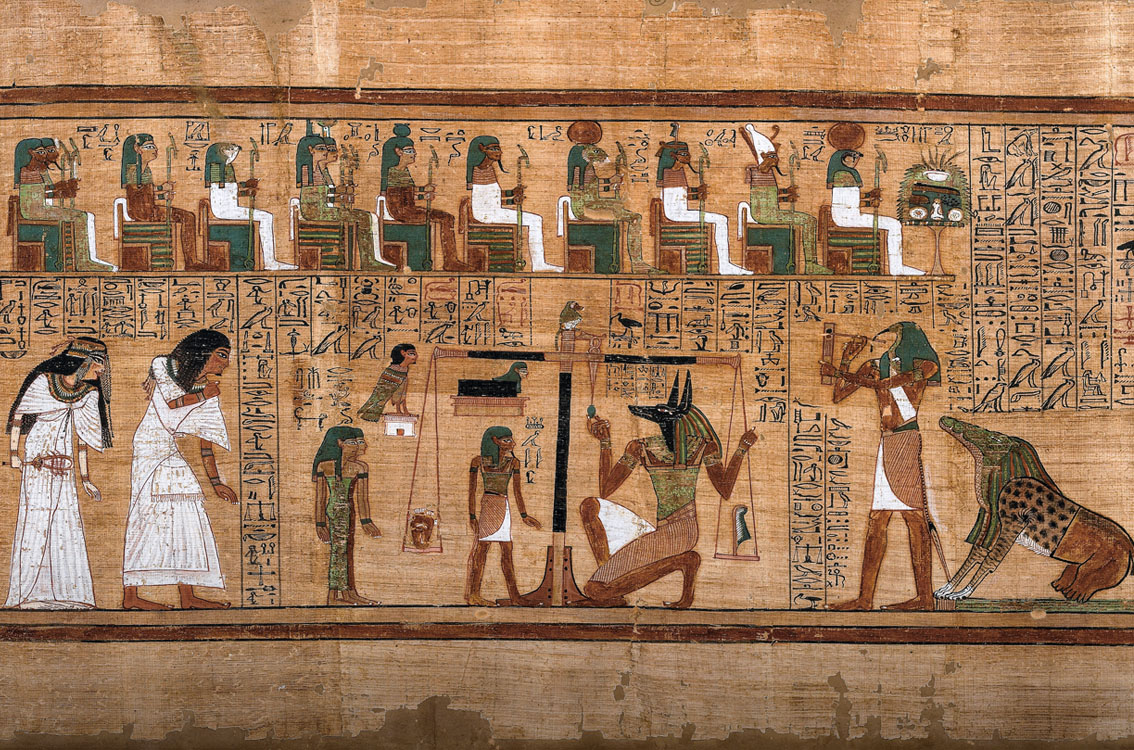
egyptian writing
Egyptian writing dates back to approximately 3000 BC, a complex and ancient system that has undergone many changes and modifications throughout history. It has been the object of interest and study by many specialists, however it was not until 1822 that Jean-François Champollion revealed the mystery that these symbols kept.
Champollion, a French historian who is described as the founder of Egyptology, was the one who analyzed and interpreted Egyptian writing, focusing on the analysis and study of the Rosetta stone.
One of the most famous forms of ancient Egyptian writing is known as hieroglyphs or sacred carvings and was developed sometime before the early dynastic period, between 3150 and 2613 BC, however it is not the only type.
Many scholars indicate that the notion of the written word developed in Mesopotamia and spread to Ancient Egypt through trade. Although a constant cultural exchange was maintained between both regions, there are no indications that Egyptian hieroglyphs have their origin in another culture, they are completely Egyptian.
There is currently no evidence of writings with these hieroglyphs, which describe non-Egyptian places or objects, and the first Egyptian pictographs have no relation to the first signs used in Mesopotamia.
The term hieroglyphics that describes these early writings is of Hellenic origin, to refer to their writing the Egyptians used the term medu-netjer what does the mean words of god, since they affirmed that Thoth, whom they considered the great god, had given them the writing.
The origin of the great god has many theories. According to some ancient Egyptian accounts, at the beginning of time, Thoth, creator of himself, took the form of a bird known as an ibis and laid the cosmic egg that contained all of creation.
Another ancient story tells that, at the beginning of time, the god Thoth emerged from the lips of the sun god Ra and another indicates that it emerged from the great confrontation between the gods Horus and Set, who represent the forces of order and chaos.
The truth is that regardless of where it came from, all the ancient stories indicate that the great god Thoth was the owner of many knowledges, one of the most important being the power of words.
Thoth gave human beings this knowledge freely, however, that gift represented a great responsibility that they had to take very seriously, because words have great power.
For the Egyptians, words can hurt, heal, build, uplift, destroy, condemn, and even bring a person back from the dead. Some Egyptologists indicate that, for this ancient civilization, writing did not have a decorative purpose, so it was not used for literary or commercial purposes.
Their main function, and perhaps the most important, was to serve as an instrument to express certain concepts or events that they wanted to make a reality. That is, in Ancient Egypt it was firmly believed that by writing something repeatedly and by magic, this could happen.
The ancient Egyptians understood that this gift of Thoth was not only to express themselves, but that literally the written word could change the world through the power they contain. But it was not something so simple, because for this power to be released and what was expressed with them could happen, this gift had to be understood, only then could it be fully exploited.
The creation of Egyptian writing
Even when humanity received its writing system from Thoth, because for the Egyptians the world was their civilization, they had to find out for themselves what this gift consisted of and above all how to use it.
In the period between 6000 and 3150 BC, when it is estimated that it was the last part of the predynastic period in Egypt, the first symbols appear to represent simple concepts, such as identifying a place, individual, event or belonging.
The earliest evidence for the existence of writing in Egypt is the offering lists in tombs in the Early Dynastic Period.
For the ancient Egyptians, dying was not the end of life, it was simply a transition, from one world to another, from one state to another. They claim that the dead lived in the afterlife and relied on the living to remember them and present them with offerings of food and drink to support themselves.
It was known as the List of Offerings and was an inventory of the offerings that were to be presented to a particular person and inscribed on their tomb wall or stelae, carved or painted. In general, food according to the tastes and customs of the dead person were placed.
This list of offerings was accompanied by the formulas of offerings, which we can define as the spell or the words that will magically transform this written list of offerings into a reality, for the enjoyment of the deceased.
Someone who had performed great deeds, who held a high position of authority, or who led troops to victory in battle, deserved greater offerings than someone who had done relatively little with his life.
Along with the list was a brief epitaph indicating who the person was, what he had made, and why such offerings were due him. These lists and epitaphs were rarely brief, they were generally quite extensive, especially if the deceased had a certain hierarchy.
The Offering lists were getting longer and more demanding, until the Prayer for the Offerings appeared, the effective substitute for the lists that were already becoming difficult to manage.
It is presumed that the prayer was originally a spoken prayer. Once written, it became a basic element around which tomb texts and representations were organized.
The same thing happened with the endless lists of the ranks and titles of officials, they began to develop them into brief narratives and what we know as autobiography was born.
Both the autobiography and the prayer are considered to have become the first examples of Egyptian literature, made using hieroglyphic writing.
However, there is still a probability that the initial purpose of writing was to be used for commerce, transmitting thanks to it information about goods, prices, purchases, etc. In Egypt they created and used three types of writing:
- Hieroglyphic, it is presumed that it was the first developed and used by the Egyptians from the pre-dynastic stage to the fourth century. It comes from pictography, using basic symbols and drawings.
- Hieratic: related to hieroglyphic writing, it was a simpler writing, which considerably complemented and simplified hieroglyphs, used mainly in administrative and religious writings. It was used between the XNUMXth and XNUMXth century BC.
- Demotics; corresponding to the Late Period of Egypt, the last stage of Ancient Egypt. It was the writing system that dominated around 660 BC, used mainly in the economic and literary area.
Egyptian papyrus, ink and writing
The development and evolution of their writing systems is closely related to the invention of papyrus and ink, this being one of the most important contributions to Egyptian culture.
Papyrus is a plant native to Egypt, growing abundantly on the banks of the Nile. Before the invention of this material that served as a support for writing, it was made on clay tablets and rocks, being very impractical, since a crumbles and the other was very heavy and difficult to carve.
But the papyrus made a big difference, as they only required a brush and ink to capture their words, materials that they could easily take anywhere.
Ink and papyrus were considered a revolutionary invention bequeathed by the ancient Egyptians to the rest of the cultures, being the fundamental basis of handwritten communications.
Development and use of Egyptian hieroglyphic writing
Hieroglyphs developed from the earliest pictograms, which were symbols and drawings to represent concepts such as a person or an event. For the creation of this writing system, the Egyptians paid attention to their environment and took common objects, animals, plants, etc., to make their symbols.
However, these pictograms used by individuals initially contained rather limited information.
For example, you could draw a woman, a tree and a bird, but it was very difficult if not impossible to convey their connection. The first pictographic writing lacked the capacity to answer many questions related to the three figures, because the woman was near the tree, she saw the bird, she was hunting, etc.
The Sumerians in ancient Mesopotamia realized this limitation in using pictograms and invented an advanced writing system around 3200 BC in the city of Uruk.
Due to this aspect, the theory that the Egyptian writing developed from the Mesopotamian writing is unlikely, since if so the Egyptians would have learned the art of writing from the Sumerians, bypassing the stage of the pictograms, starting from once with the Sumerian creation of phonograms, the symbols that represent sounds.
The Sumerians learned to expand their written language through symbols that directly represented that language, so that if they wanted to convey some specific information they could do it fully and through a clear message. The Egyptians developed this same system, but added logograms and ideograms.
It is considered that the basis of Egyptian hieroglyphic writing was: the phonogram, the logogram, the ideogram and the determinative. So let's learn a little more about them:
1-Phonograms ie symbols that represented sounds only. There are three types of phonograms that are part of hieroglyphs:
- Unilateral or alphabetic signs: these represent a consonant or sound value.
- Bilateral signs, which act as two consonants.
- Trilateral signs reproduces three consonants.
2-Logogram, is a written character that symbolizes a term or phrase, they are associated more with meanings than with sounds and are usually easy to remember
3-Ideograms, which are signs that represent an idea or a concept, that is, it clearly conveys a certain message, such as the current emojis that allow the person reading the message to know the state of mind of a person with an angry face, if he is joking with a face that laughs to tears or whether the weather of the place is sunny or rainy.
4-Determinatives: they are ideograms used to indicate what the object represented was, since some icons or symbols had more than one meaning. Ideograms are usually placed at the end of a word, being useful in two ways:
- It allows explaining or clarifying the meaning of a particular word, since there are some that are very similar, almost the same
- Its use allows to indicate where one word ends and another begins.
Writing using hieroglyphs had the peculiarity that it could be written in the desired direction, as long as it looked clean and beautiful on an aesthetic level, that is, it can be written in any direction from left to right, from bottom to top and vice versa in both. cases even.
When making inscriptions in tombs, temples, palaces, etc., the important thing was to make a beautiful work and for this it is written in the direction that best fits the available space.
It is characteristic of Egyptian writing to be governed by aesthetics, above all, by placing the hieroglyphs grouped in rectangles, so the signs are enlarged or reduced to harmonize the group, either vertically or horizontally, giving a balanced appearance to the inscription. .
In some cases they would reverse the order of the symbols if they felt that an aesthetic and balanced rectangle could be visualized, regardless of whether it was the wrong order.
However, the sentence could be easily read, guided by the direction in which the phonograms were oriented, since the images are always at the beginning of the sentence, for example, if the sentence must be read from right to left, the animals or human beings, they will be oriented or looking to the right.
For connoisseurs of the language it was not something complicated, just like the absence of signs that symbolize a vowel, these were understood for those who understood the spoken language. The Egyptians were able to read the hieroglyphic writing, even when letters were missing from the sentence, because they recognized them.
The Egyptian hieroglyphic writing alphabet consisted of twenty-four basic consonants, but there were more than seven hundred different symbols that are added to the sentence to clarify or specify what the consonants are trying to convey. To write in using this system correctly, the Egyptians had to memorize and use these symbols properly.
This large number of signs existed and were used prior to the alphabet, which is why, despite the fact that it could be an overly complex system due to the large number of symbols, they could not be ruled out for religious reasons.
Remember that writing, in this case hieroglyphs, were considered a present from the god of wisdom Thoth, so discontinuing or modifying them was classified as sacrilege, and also represented an incredible loss, since the messages of the ancient texts would lose their meaning and sense.
Development and use of hieratic script
Considering how laborious it must have been for a scribe to write with hieroglyphs, it was not surprising that another writing system was developed that was faster and easier.
The writing known as hieratic or sacred writing, was made up of characters that could be considered a simplification of hieroglyphs and was developed in the early dynastic period.
Hieroglyphic writing, already firmly developed, continued to be used in ancient Egypt, being the basis of all later writing styles, but maintaining its privileged place when it came to writing on imposing monuments and temples.
Hieratic was first used in religious texts, then in other areas including business administration, books of magic and sorcery, personal and business letters, judicial and legal records and documents.
This type of Egyptian writing was done on papyrus or ostraca, rocks and wood. Initially it could be written vertically and horizontally, however from the XII dynasty under the regency of Amenemhat III, it is established that the hieratic system was written specifically from right to left, differing from the hieroglyphic system.
Around the year 800 BC, it underwent certain variations, becoming cursive script known as abnormal hieratic. The hieratic script was replaced around 700 BC by the so-called demotic script.
Development and use of demotic writing
Demotic writing, or popular writing, was used for all kinds of purposes, with the exception of writing majestic inscriptions on stone, which was still done in hieroglyphs.
The ancient Egyptians called the demotic script sekh-shat or the one used in documents, being the most used and popular for the next thousand years.
Used in all kinds of written works, this type of Egyptian script originated in the Delta region of Lower Egypt and spread south during the 1069th dynasty of the Third Intermediate Period between 525 and XNUMX BC.
Demotic continued in use during the Late Period of Ancient Egypt between 525 and 332 BC and the Ptolemaic Dynasty between 332 and 30 BC, later in so-called Roman Egypt, Demotic was replaced by the Coptic script .
Development and use of the Coptic script
Coptic was the script of the Egyptian Christians, they basically speak Egyptian languages and write using the Greek alphabet, with some additions from the Demotic script. These groups were known as Copts.
In the Coptic alphabet there are thirty-two letters, twenty-five derive from the Hellenic letters, which have their origin in the Egyptian hieroglyphic script, and the remaining seven come directly from the Egyptian demotic script. Imitating the writing of ancient Greece, Coptic is written only from left to right.
It was introduced in Egypt towards the end of the second century before Christ, having its splendor in the fourth century. Today Coptic is often used in the Coptic Church to write liturgical texts.
The Copts incorporated the vowels present in the Greek language into their writing, making the meaning very clear to anyone who reads their texts, regardless of their native language.
The Coptic script was frequently used to copy and preserve a series of important documents, which were translated from their original language into this language. Mostly the documents translated into Coptic were related to religion, the books of the Christian New Testament and some gospels recognized by other religions.
In addition, it was useful for the understanding of hieroglyphs, since it provided certain keys for that to later generations.
The history of the Coptic alphabet can be associated with the Ptolemaic Dynasty, which begins in 305 BC with the general Ptolemy I Soter and culminates with Ptolemy XV Caesar in 30 BC. In this period, Greek begins to be used in official writings. In addition, demotic writings began to be transcribed using the Greek alphabet.
Many ancient texts were transcribed into what is now known as Old Coptic, in the first two centuries of Christianity. They consist of texts in Egyptian, written with the characters of the Hellenic alphabet and Demotic letters, which made it possible to reproduce certain Coptic sounds.
When Christianity was established as the official religion of Egypt, the traditional cults of the ancient Egyptians were vetoed and prohibited, causing the progressive disappearance of hieroglyphic writing and later demotic writing, establishing Coptic as the writing system approved by the Christian church. .
Disappearance of Egyptian writing
Many theories and arguments indicate that the meaning of hieroglyphs vanished in the development of the last periods of Egyptian history, as the reading and writing of these symbols was displaced by other simpler systems and people forgot how to read and write. hieroglyphs.
However, many studies indicate that hieroglyphs were actually used until the Ptolemaic dynasty, beginning to lose importance with the appearance of Christianity, during the early Roman period.
However, throughout Egyptian history there were very short periods of time where the use of hieroglyphic writing was resumed, until the world for the Egyptians changed with the new religious beliefs.
With the use of the Coptic script, which fitted into the new model of culture that was replacing the Ancient Egyptian culture, hieroglyphs were forgotten and completely vanished.
During the Arab invasion of the seventh century after Christ, no person living in Egyptian lands knew what the hieroglyphic inscriptions meant.
Later, when the European explorations began to frequent the country around the XNUMXth century after Christ, they did not understand the same as the Muslims, that that large number of symbols was a very old written language.
In the XNUMXth century AD, all that European explorers could claim was that hieroglyphs were magical symbols, an inference arrived at through the work of the German scholar Athanasius Kircher.
Athanasius Kircher simply followed the example and shared the ideas of the ancient Greek writers, who were also unaware of the meaning of hieroglyphics, assuming that they were just individual symbols representing a concept. Focusing on this erroneous model he attempted to decipher the Egyptian script, resulting in failure.
However, he was not the only one, many other scholars would try to decipher the meaning of these ancient Egyptian symbols, but none were successful as they had no basis to understand what they were working with,
Even when they seemed to identify a pattern in the texts, there was no way of knowing how those patterns could be translated.
However, around the year 1798 after Christ, during the invasion of Napoleon's army to the Egyptian lands, a lieutenant found the Rosetta Stone. The man recognized the potential importance of this relic and it was transferred to Cairo, exactly to the Egyptian institute founded by Napoleon at the beginning of his campaign in this country.
The Rosetta Stone is a proclamation in Greek, hieroglyphics, and demotics of the reign of Ptolemy V, who ruled from 204 to 181 BC.
The three texts in different writing systems convey the same information, following the Ptolemaic ideal of a multicultural society. Anyone who reads Greek, hieroglyphics, or demotic will understand the message inscribed on the Rosetta stone.
However, the conflicts between England and France increased, delaying as expected life in different areas, for example the work of deciphering hieroglyphs with the help of stone was delayed.
With the defeat of the French in the Napoleonic wars, the Rosetta Stone was transferred from Cairo to England and studies and analysis of it were resumed.
The researchers in charge of analyzing and deciphering this ancient writing system continued to work based on Kircher's studies and deductions, worked out and exposed in a quite convincing way.
The English scientist Thomas Young, who collaborated in the work of deciphering the hieroglyphs, thought that they represented words and that they were also associated with Demotic, Coptic and some later scripts.
Young's work was noted and considered by his colleague and rival, the philologist Jean-Francois Champollion, who around 1824 AD published his research on the decipherment of Egyptian hieroglyphs.
This philologist will always be related to the Rosetta Stone and hieroglyphs, since he was the one who conclusively demonstrated that these ancient Egyptian symbols were a writing system made up of phonograms, logograms, and ideograms.
Even when the dispute between the two scholars was a constant, trying to establish who made the most important discoveries and therefore who is deserving of greater recognition and merit, a situation that academics maintain today, the contribution of both in this area.
Young's work laid the foundations on which Champollion developed his research and achieved the expected results. However, it is undeniable that it was Champollion's work that finally cracked the ancient writing system and exposed Egyptian culture and history to mankind.
Jean Francois Champollion
Known as the founder of Egyptology, this French historian was born on December 23, 1790 in a small town known as Figeac. Son of Jacques Champollion and Jeanne-Françoise Gualieu, he was the youngest of seven children.
He studied at the Lyceum of Grenoble, an institution with a military-style program and with the aim of offering a first-class and uniform education, as established by Napoleonic laws around 1802. Even though it was difficult for him to adapt and culminate in this institution, he graduated in 1807.
This avid student of ancient languages and Egyptian culture received his Ph.D. in Ancient History from the University of Grenoble.
His life's work was to decipher Egyptian hieroglyphs and in 1824 he published the Summary of the hieroglyphic system of the ancient Egyptians, work that explained this complicated writing system.
Around the year 1826, he was appointed as curator of the Egyptian collection of the Louvre museum, in charge of selecting and gathering ancient objects for the exhibitions that he had the responsibility of organizing, with the limitations imposed by the museum.
In 1828 he was part of an expedition to Egypt, made up of artists, technical draftsmen, architects and other Egyptologists, this being the only time he visited this land that he admired and to which he dedicated his life. He visited places like Cairo to see the pyramids and Nubia where he appreciated the Ramesside temples.
I enjoy about eighteen months of field work in the Egyptian lands, returning to France a little tired and ill health. In the first quarter of the year 1831, he received his appointment as Professor of Archeology at the College de France.
He died with many health complications on March 4, 1832, without being able to complete what he considered his great work egyptian grammar, which was later completed by his older brother Jacques-Joseph in tribute to his memory.
We invite you to consult other interesting links on our blog:
